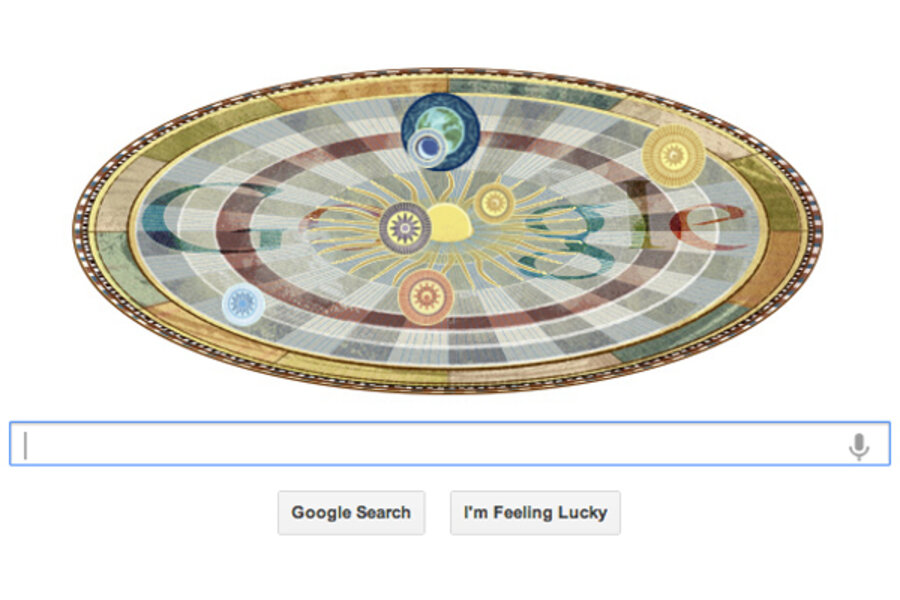How Nicolaus Copernicus rewrote the rules of the solar system
The Google homepage today depicts seven metal planets rotating around a painted sun – an homage to the pioneering Renaissance-era astronomer Nicolaus Copernicus.
So who was Copernicus, exactly? Well, for one, he was the man who first taught us that the earth revolves around the sun, and not the other way around.
Copernicus was born in 1473, in Torun, Poland a low-slung city on the Vistula River. His father was a wealthy merchant, his mother came from a well-established merchant family, and Nicolaus, the youngest of four children, was afforded a comfortable upbringing and a comparably rich education. When he was 10, his father died, and the Copernicus kids passed into the care of their uncle, Lucas Watzenrode.
Watzenrode would eventually become a high-ranking bishop in the Catholic church; with his help, Copernicus, who had studied astronomy and astrology at the University of Krakow, was granted a position as a canon in Warmia, in northeastern Poland. But before moving to Warmia, Copernicus traveled to Bologna, in Italy, to study canonical law.
In Bologna, he had additional time to study mathematics and astrology, this time as an assistant to Domenico Maria the Ferrarese of Novara a professor at the local university. Later, he spent some time at the University of Padua, where he boned up on contemporary medicine, and at the University of Ferrara, where he eventually earned his doctorate in canonical law. By 1503, he was back in Warmia, where he remained until his death.
According to the online Stanford Encyclopedia of Philosophy, "sometime between 1510 and 1514 [Copernicus] wrote an essay that has come to be known as the 'Commentariolus,' [which] introduced his new cosmological idea, the heliocentric universe."
At the time, the prevailing theory, codified by the 1st century philosopher Ptolemy, was geocentrism – the belief, in short, that all celestial bodies revolve around the earth. Undertaking an extensive analysis of the path of the planets overhead, Copernicus argued that in fact it was the sun that was at the center of the solar system.
"Commentariolus," or "Little Commentary," was first circulated in 1514, and included Copernicus's famous seven axioms:
1. There is no one center in the universe.
2. The Earth's center is not the center of the universe.
3. The center of the universe is near the sun.
4. The distance from the Earth to the sun is imperceptible compared with the distance to the stars.
5. The rotation of the Earth accounts for the apparent daily rotation of the stars.
6. The apparent annual cycle of movements of the sun is caused by the Earth revolving round it.
7. The apparent retrograde motion of the planets is caused by the motion of the Earth from which one observes.
"Commentariolus" was distributed primarily among Copernicus's friends – its audience was not wide. In fact, it was Copernicus's definitive text, "De revolutionibus orbium coelestium," or "On the Revolutions of the Heavenly Spheres," that made his name. That book, which is hundreds of pages long, was attacked by the Catholic church and by Martin Luther, who called Copernicus a "fool."
Copernicus died the year it was published, but if he were alive today, he'd undoubtedly take solace in the fact that he, and not Martin Luther or Ptolemy, was right about the path of the planets and the very solar system itself.
For more tech news, follow us on Twitter: @CSMHorizonsBlog





